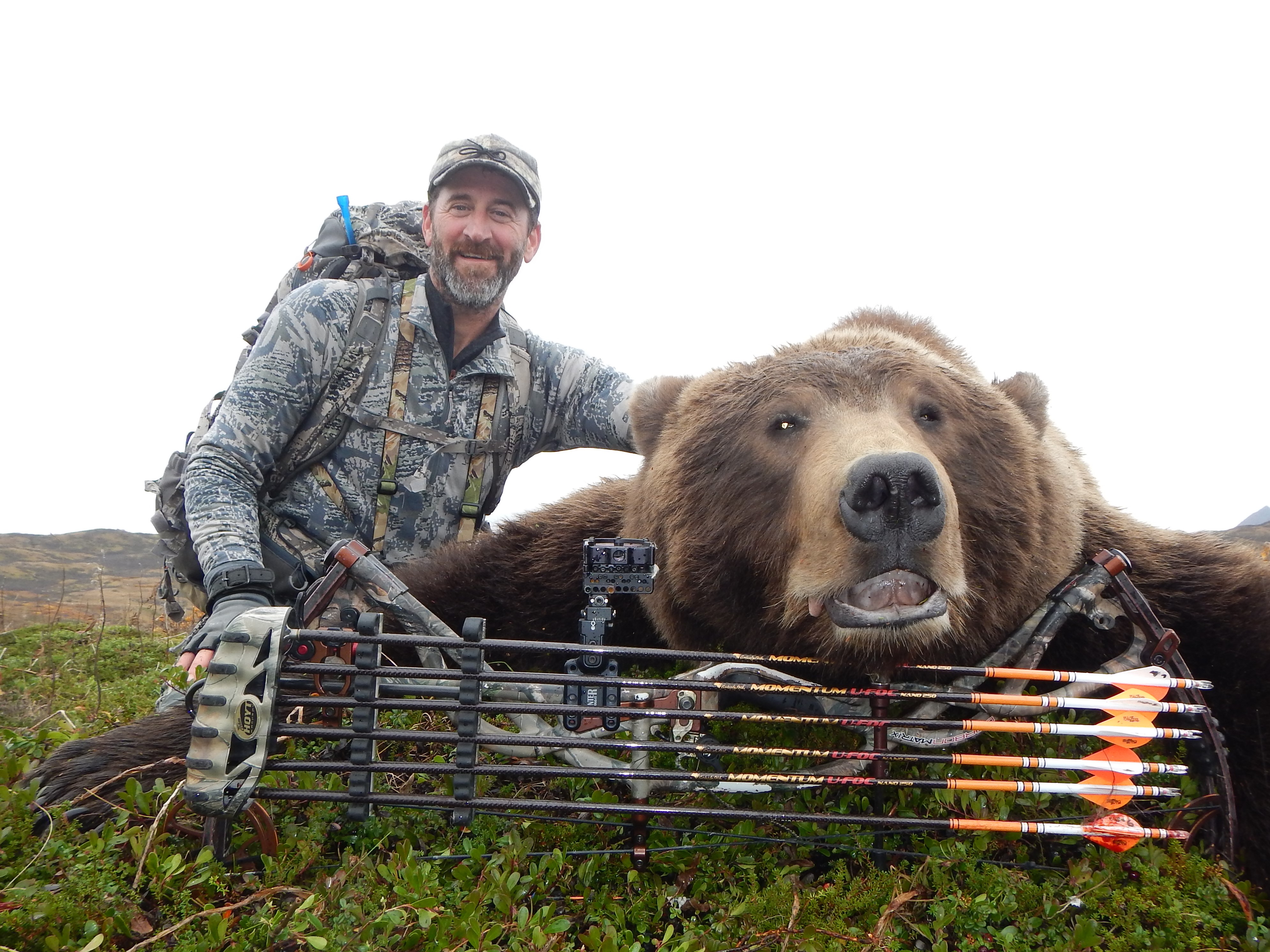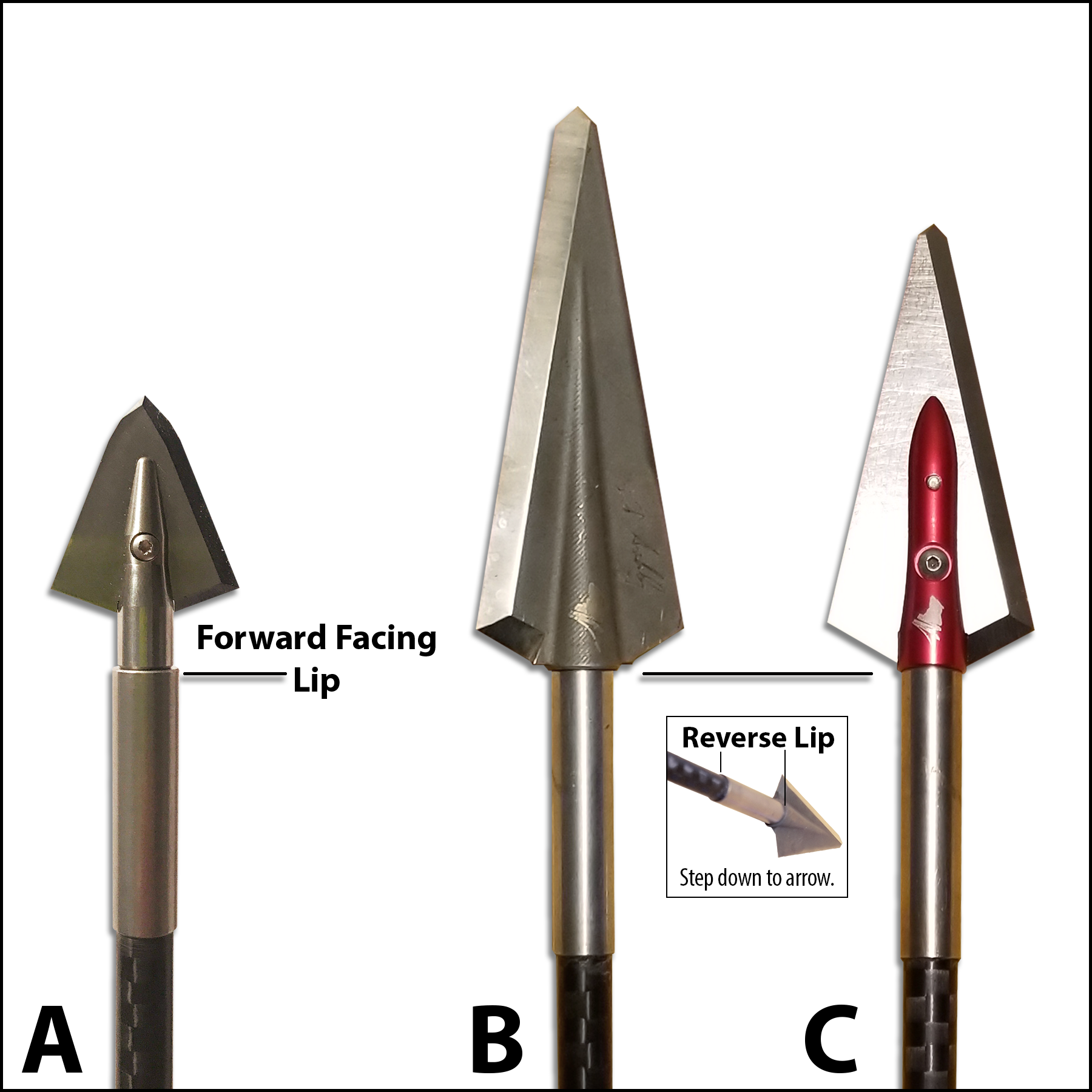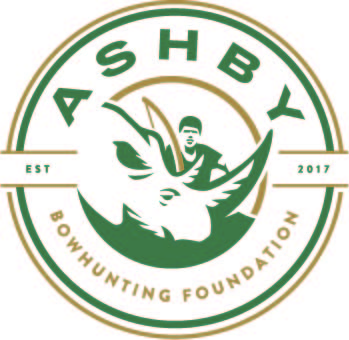Rethinking Arrow and Broadhead Performance
A NEW Series of Bowhunting Articles by the Ashby Bowhunting Foundation
Article 10: Factor 9 – Broadhead/Shaft Silhouette
Would you like to hunt with arrows and broadheads that give you pass-throughs on big game shot after shot? Would you like to have complete confidence in your arrows and broadheads to give you lethal penetration and reliable kills even if you hit bone? Of course, you would! Every serious bowhunter wants that kind of performance from their setup. Join us for Dr. Ed Ashby’s Top 12 Penetration Enhancement Factors.
After extensive testing, Dr. Ed Ashby identified twelve specific arrow penetration enhancement factors. He then ranked them in order of importance so that bowhunters would have a straightforward guide as to what they should build into their arrow and broadhead setups—and in what order—so they could create the most reliable and lethal setups possible.
To optimize your arrow and broadhead builds, it is recommended that you incorporate as many of the 12 Penetration Enhancement Factors as possible.
The ninth factor, Broadhead/Shaft Silhouette, will be discussed today.
“Any rough or irregular surface increases arrow drag in all tissues. The ‘less bumpy’ your arrow and broadhead’s silhouette the more effortlessly it passes through tissues.” – Dr. Ed Ashby
Continuing our theme of efficient use of force, the silhouette of your arrow system (broadhead/shaft) places a focus on how streamlined the entire system truly is. As the name suggests, the simplest way of evaluating this is to look at the overall silhouette. Any rough/irregular surfaces or any abrupt transitions (forward facing) will noticeably increase drag in all tissues. This effect is even more significant when bone is introduced.
The smoother and more gradual that each transition can be, the lower the drag and the greater the penetration potential.

There are a few key areas to pay attention:
- Blade Tip
- Blade (Thickness)
- Blade to Ferrule
- Ferrule to Component/Shaft
- Fletching
Blade Tip
There are many different aspects to tip design from overall efficiency to skip angle to strength/durability. Looking specifically at efficiency, we want a clean entry—which requires a smooth transition from the start of the tip to the main blade surface. Many tips on the market are quite abrupt and are marketed as “bone-busting,” but throughout the testing we have yet to find any statistically relevant evidence to support this. In reality, these tips are creating a sudden, unnecessary spike in resistance, especially when bone is encountered, increasing the potential for other negative complications. Whether it’s a needle point, tanto, flat, or rounded tip, you should be looking for a gradual transition from the leading edge to the face of the blade.
Blade (Thickness)
When dealing with something as thin as a razor blade, there is minimal concern about transitioning from the cutting edge to the face of the blade, but blades that thin tend to be pretty brittle. Many of your more durable broadheads will have blades approaching 1/16-inch thick resulting in a transition zone from the cutting edge to the blade’s full thickness. The angle of this transition will alter how it interacts with whatever medium is being penetrated. The lower the edge sharpening angle, the more gradual the transition to full blade-thickness becomes. The edge-bevel’s angle is also a ‘simple machine;’ an inclined plane. As such, it reduces the force required to raise the cut tissue during penetration to the level of the blade’s face. This becomes of increasing importance as the hardness and mass of the tissue increases, assuming the edge retains its structural integrity.
With some of the heaviest options on the market, the blade can get even thicker than 1/16-inch and at that point some additional considerations should be made. Similar to the inclined plane of the edge-bevel, these thicker blades can have a secondary inclined plane from tip to tail. This effectively reduces the required force at entry allowing for a gradual transition to the full thickness at the tail.
Blade to Ferrule
The transition from blade to ferrule can be quite a challenge as it can directly impact the ferrule strength, especially for multi-piece heads. Many of the “smoother” ferrules are still fairly abrupt, essentially presenting a sudden hill on top of the blade. Yes, the rounded nature improves the transition, but this is where single piece designs truly shine as the integral “ferrule” can extend further towards the tip and create a much more gradual transition. The additional length of these integral ferrules also means significantly more blade support.
Ferrule to Component/Shaft
As noted previously in factor #5, the transition from the broadhead ferrule to the shaft is a critical one. Unlike the previous aspects, this one is more in the control of the consumer as you need to be aware of the ferrule size of the broadhead you selected, as well as the size of the component/shaft you have selected. The biggest thing to avoid is a forward-facing lip where the shaft or component is a larger diameter than the ferrule. This creates a literal blunt edge that must plow through whatever medium the shaft enters. At minimum this transition should be smooth (equal diameter), but the preference would be to actually have a step down. Whether the component is matched and then transitions down to the shaft, or the shaft is simply smaller doesn’t necessarily matter, but having the reduction in size past the broadhead ferrule can provide significant improvement to overall potential.

Fletching
The choice in fletching is the one area that honestly is rarely discussed. How many times have you seen a shaft nearly pass through, only to be hung up on the fletching? How many times have you recovered a shaft and realized that fletching pulled off inside the animal? Think about how much force is actually required to pull a vane off, and what that could mean on some of the large game we chase? This is a big reason why a lot of the folks trying to truly maximize their potential on some of the largest game in the world choose to run feathers (yes…even for compounds). The main advantage is that it takes very little pressure to lay a feather down and for it to compress against the shaft during penetration. You still have a slight lip from the shaft to above the quill, but compared to most modern vanes this is a drastic reduction in drag while the tail of the shaft is moving through tissue.
All of these aspects may seem small, but they can have a noticeable impact on your end results. As with all these penetration factors, they are simply tools to help you evaluate and understand your arrow system. So the next time you pick up one of your arrows, hold it up and actually look at it. Look at the tip and the blades. Look at the ferrule. Look at how one section flows into the next. Is it as streamlined as you would like or are there areas that could be improved? Either way, simply understanding what you have will give you a better grasp on its overall potential and an idea of what you may want to alter in the future.

Get to know the authors!
Dr. Ed Ashby
Dr. Ed Ashby, a legend in the archery hunting community, dedicated more than 27 years to the study of arrow performance and broadhead lethality. His involvement in the historic Natal Study helped validate just how lethal archery equipment could be on all sized big game animals and was the main reason that bowhunting was ever legalized in South Africa.
Rob Hummel
With a background in fabrication and engineering, the current standard being pushed by the industry didn’t feel right when Rob first entered the world of archery. Fortunately, after being directed to some of the reports from Dr. Ed Ashby’s field research it all began to align with the mechanics he already understood. Over the last decade, Rob has continued pushing to bring consistent lethality to the forefront of the archery industry.
Todd Smith
For over 40-years, his passion for bowhunting and thirst for knowledge and understanding have driven Todd to learn everything he could about arrows, broadheads, and arrow lethality. Todd is an author, public speaker, and has helped to educate tens of thousands of bowhunters on how to set themselves up for bowhunting successes by using proven – lethal – arrow and broadhead set-ups.

What’s the Ashby Bowhunting Foundation all about?
The Ashby Bowhunting Foundation is dedicated to continuing Dr. Ed Ashby’s research and to ensuring that bowhunters everywhere will have free access to information that will help them build extremely lethal and reliable arrow and broadhead setups for all species of big game. The foundation was started in 2017 to continue the work of Dr. Ed Ashby that has benefited bowhunters worldwide for decades. The Foundation’s goal is to provide information to achieve the highest possible success rate and reduce the wound/non-recovery rate of big game to the lowest level possible. Through a program of continuing research, the Foundation seeks to find the most lethal arrow setups, taking into account all possible hits under real hunting conditions, controlled testing and using freshly culled animals. The results of this testing is always made available to the global bowhunting community free of cost, utilizing multi-media outlets for information and test results. The Ashby Bowhunting Foundation is excited for this opportunity to partner with DSC and to share these articles with all DSC members so they can make informed decisions of whether to change to arrow and broadhead combinations that will increase their odds of bowhunting success under all situations and conditions. For more information please visit: https://www.biggame.org/ashby-bowhunting-foundation



